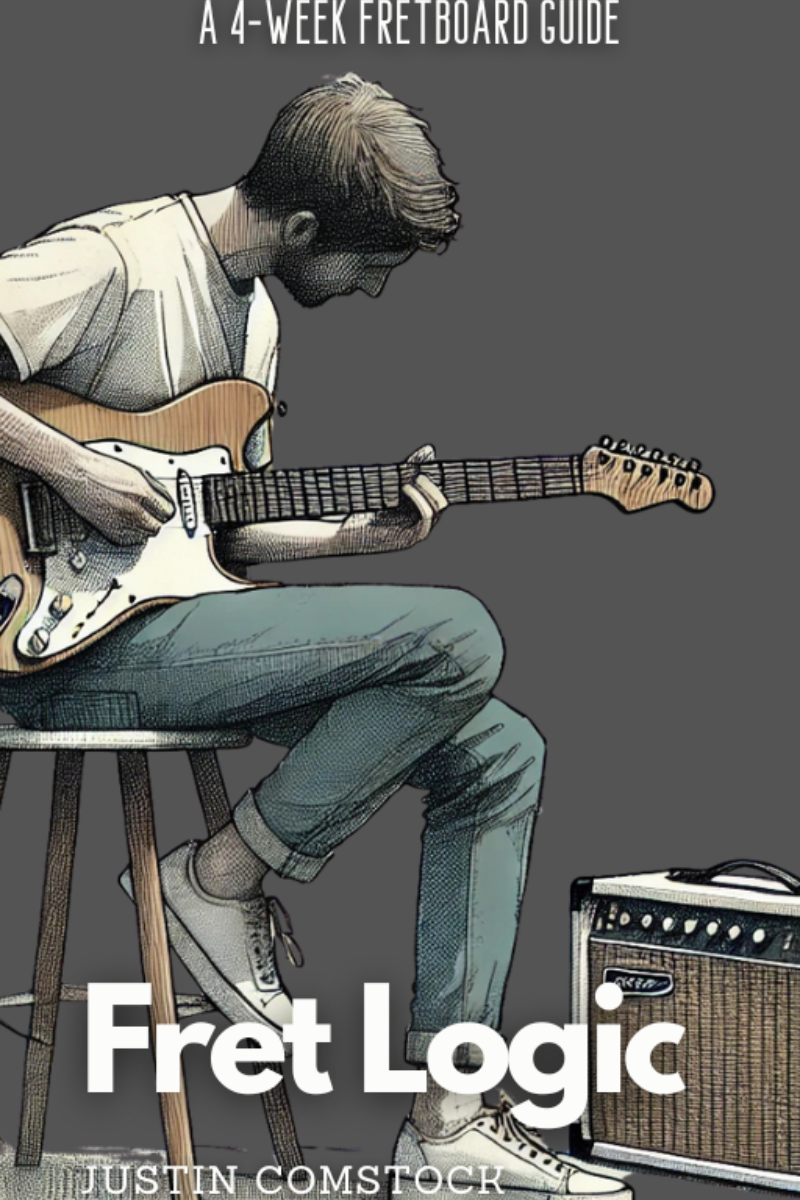“You don’t need a library of chords. You need a handful you can switch between in your sleep.”
—Every Great Guitar Teacher, Ever
Let’s get right to the point:
Most people fail at guitar because they believe learning hundreds of shapes is the secret.
It’s not.
The real secret is mastering a few essential guitar chords and practicing them so relentlessly that your fingers stop thinking and start playing.
If you’ve been jumping from one video tutorial to the next, searching for clarity, this guide is your reset button.
Today, you’ll discover:
✅ Which simple guitar chords unlock 80% of songs
✅ Why transitioning between chords matters more than memorizing them
✅ Four powerful progressions that make you sound professional fast
✅ The proven way to build muscle memory without burning out
✅ How FretDeck™ and our Discord can shortcut your learning curve by months
Ready? Let’s build your foundation.

❌ Stop Guessing. Start Shredding.
If you’re still fumbling through scale patterns and box shapes… it’s costing you progress.
FretDeck™ is the no-fluff system that shows you exactly how to master the fretboard—fast. Early access.
⚡️ This isn’t for dabblers. It’s for players who want results.
👉 Click here to join the pre-launch now
Early access. Limited rewards. Don’t wait.
🎯 Why Guitar Chords Are the Bedrock of All Lessons for Guitar
Before you ever play your first solo, before you dive into scales or theory, you need chords.
Think about your favorite songs:
- The energy of a rock anthem? Chords.
- The sweetness of a folk ballad? Chords.
- The groove of a blues shuffle? Also chords.
In every style, simple guitar chords create the framework.
This is why almost every structured lesson for guitar begins with chord practice—and why skipping this step leaves you frustrated and stuck.
🎵 Easy Open Guitar Chords for Beginners (Your First Big Win)
Open chords are the first shapes every guitarist should learn.
Why?
They use open strings, which means:
✅ Less hand strength required
✅ Rich, resonant sound
✅ Easy to combine into progressions
Here are the five you need first:
🎸 G Major
Why it matters: You’ll find this chord in thousands of hits.
How to play:
- Middle finger on 3rd fret, low E
- Index finger on 2nd fret, A string
- Ring finger on 3rd fret, high E
Pro Tip: Practice switching between G and C until you can do it without looking.
🎸 C Major
Why it matters: The backbone of pop ballads and classic rock.
How to play:
- Ring finger on 3rd fret, A string
- Middle finger on 2nd fret, D string
- Index finger on 1st fret, B string
Strum from the A string down.
🎸 D Major
Why it matters: Crisp, bright, and essential for folk and country.
How to play:
- Index finger on 2nd fret, G string
- Middle finger on 2nd fret, high E
- Ring finger on 3rd fret, B string
Strum from the D string down.
🎸 E Minor
Why it matters: The easiest chord of all—and it sounds HUGE.
How to play:
- Middle finger on 2nd fret, A string
- Ring finger on 2nd fret, D string
Strum all six strings.
🎸 A Minor
Why it matters: Perfect for soulful, emotional songs.
How to play:
- Middle finger on 2nd fret, D string
- Ring finger on 2nd fret, G string
- Index finger on 1st fret, B string
Strum from the A string down.
Want a deeper look at chord diagrams and shapes?
👉 Explore Simple Guitar Chords
⚡ Power Chord Lessons for Guitar: Your Shortcut to Rock
After you’ve got open chords down, it’s time to learn power chords.
Why?
They’re the simplest way to play big, aggressive sounds without worrying about major/minor tonality.
Example: E5 Power Chord
- Index finger on 2nd fret, A string
- Ring finger on 4th fret, D string
Strum only those two strings.
Use palm muting to tighten your tone and create that classic crunch.
Pro Tip:
Power chords move up and down the neck. One shape = infinite possibilities.
🎵 Triad Lessons for Guitar: The Secret Sauce of Pro Rhythm Playing
Triads are small, three-note chords that make you sound polished.
Most players never learn them, which is why their rhythm parts sound clunky.
Why you need triads:
✅ They simplify complex chords into bite-sized shapes
✅ They teach voice leading (smooth transitions)
✅ They help you see the fretboard like a pro
Example: G Major Triad (Top 3 Strings)
- Index finger on 3rd fret, B string
- Middle finger on 4th fret, G string
- Ring finger on 3rd fret, high E
Strum only those three strings.
🛠️ Practicing Guitar Chords the Smart Way (Lessons Most Ignore)
It’s not enough to memorize chord shapes.
You have to train your hands to switch effortlessly.
Here’s your roadmap:
✅ Start Slow:
Accuracy first. Speed comes later.
✅ Use a Metronome:
Play at 60 BPM. Your timing will improve faster than you think.
✅ Loop Transitions:
Practice G–C–D–G for 5 minutes non-stop.
✅ Keep Strumming:
Don’t pause to fix mistakes. Build momentum.
✅ Use Pivot Fingers:
When possible, keep one finger anchored to smooth your transitions.
✅ Listen to Songs:
Identify chords by ear. This trains you to recognize patterns.
Want to create a daily practice plan?
👉 Check out our Guitar Practice Routine
🎵 Simple Guitar Chord Progressions You’ll Play Again and Again
Learning progressions transforms random shapes into real music.
Start with these four classics:
1️⃣ I–IV–V (Three-Chord Classic)
In G Major: G–C–D
Used in rock, blues, country, and folk.
2️⃣ I–V–vi–IV (The Pop Formula)
In C Major: C–G–Am–F
A staple of modern hits.
3️⃣ ii–V–I (Jazz and Sophisticated Styles)
In C Major: Dm–G–C
Smooth, satisfying resolutions.
4️⃣ I–vi–IV–V (50s Doo-Wop)
In A Major: A–F#m–D–E
Nostalgic and timeless.
Tip: Strum each chord for four beats. Keep looping.
🚀 The Fast Track to Mastery: Why FretDeck™ Beats Random Lessons
If you’re tired of trying to piece together lessons from YouTube, FretDeck™ is your next step.
FretDeck™ is not a course.
It’s a visual system that shows you exactly where chords, scales, and triads live—without the overwhelm.
🎯 What’s Inside FretDeck™?
✅ 60 pentatonic scale cards in every key
✅ Real-world chord diagrams you can use instantly
✅ Bite-sized practice prompts you can finish in 10 minutes
✅ A roadmap to fretboard mastery
Early backers get bonuses:
🔥 Digital video lessons
🔥 Bonus chord progression expansion deck
🔥 An invite to our private Discord community: Guitar Freaks Hangout
👉 Unlock FretDeck™ on Kickstarter

❌ Stop Guessing. Start Shredding.
If you’re still fumbling through scale patterns and box shapes… it’s costing you progress.
FretDeck™ is the no-fluff system that shows you exactly how to master the fretboard—fast. Early access.
⚡️ This isn’t for dabblers. It’s for players who want results.
👉 Click here to join the pre-launch now
Early access. Limited rewards. Don’t wait.
🎧 Join Guitar Freaks Hangout: Your Creative Circle
Don’t learn alone.
Inside Guitar Freaks Hangout, you’ll:
✅ Post progress clips
✅ Get feedback from real players
✅ Access exclusive FretDeck™ guides
✅ Jam with other musicians
Plus: Download Fret Logic, our 80-page guide to fretboard mastery—free.

Join Guitar Freaks Hangout on Discord! 🎸
Get Fret Logic FREE!
Join the Guitar Freaks Hangout Discord and get exclusive access to my entire e-book, Fret Logic! Master the fretboard and elevate your solos with this comprehensive guide.
👉 Don’t miss out—join now and download your free copy!
🎯 Final Thoughts: Simple Guitar Chords Are the Fast Track
You don’t need to learn 100 shapes.
You need to master a few simple guitar chords, then practice them until your hands can move without thinking.
This is how great players are made—one chord, one progression, one day at a time.
✅ Your Next Steps
🔗 Get FretDeck™
(Serious players only.)
🎸 Join Guitar Freaks Hangout
(Get Fret Logic free.)
🎵 Explore More Lessons for Guitar
(Your next step to sounding like a real musician.)
You’ve got this. Start with one chord. Build your story.
Want even more beginner-friendly chord diagrams and tips? Check out our guide to Simple Guitar Chords: 10 Shapes Every Beginner Must Know to expand your repertoire.










